How to create a digital sweater
Measure your garment and add specifications in outfitxr.io
Let's start by taking photos of your product.
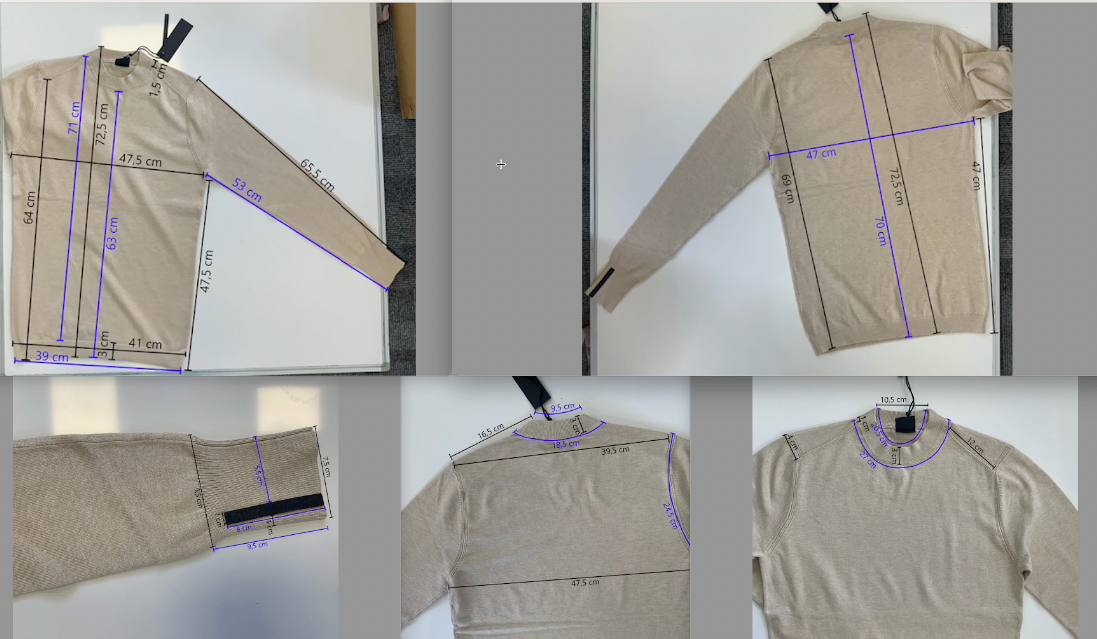
Email the photos to yourself for easy access and organisation.
Once you've taken photos, transfer them to your computer. Organise them into a folder and rename for easy identification, like 'front_view' or 'sleeve_detail'. Open your editing software to crop and adjust these images to the necessary dimensions. Saving them as PNG files works best for quality and transparency.
Navigate to OutfitXR and select 'Add Product' to begin uploading your images by Specification section.
Ensure every image is uploaded correctly to proceed with the digitalisation.
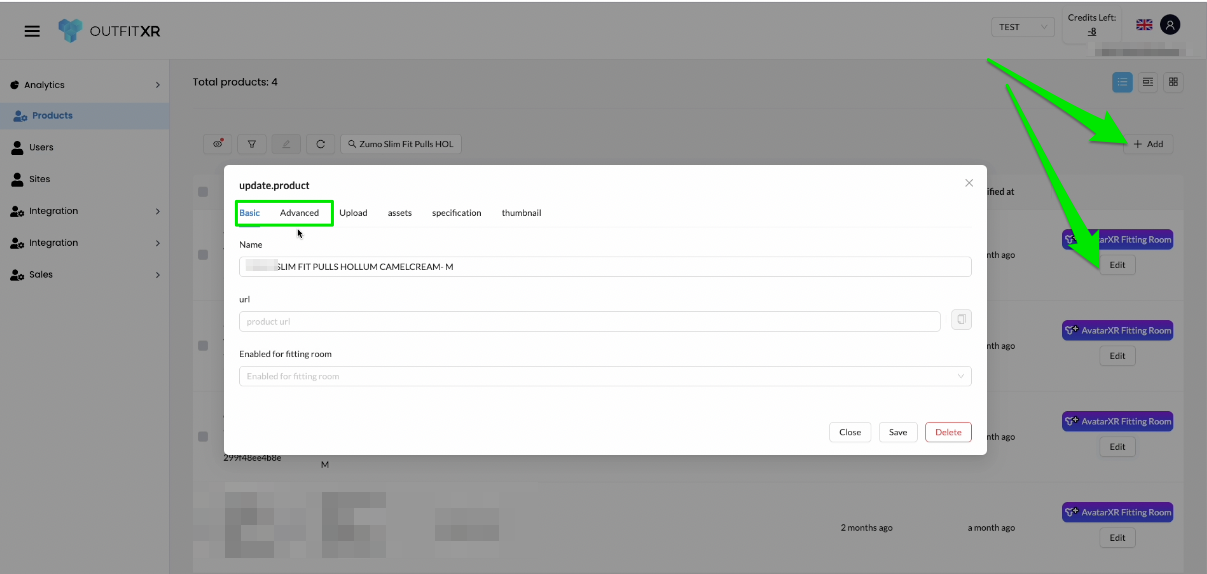
Measure every part of the sweater, including collar, sleeves, and hem. Carefully note these measurements, as they significantly influence the fit of your digital garment.
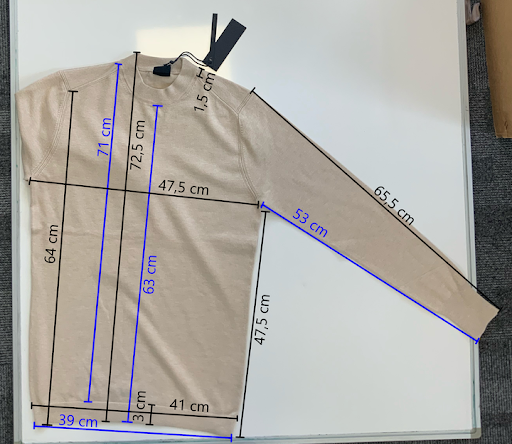
Go to the uploaded photo and fill in the product details and save. Ensure every image is uploaded correctly to proceed with the digitalisation.
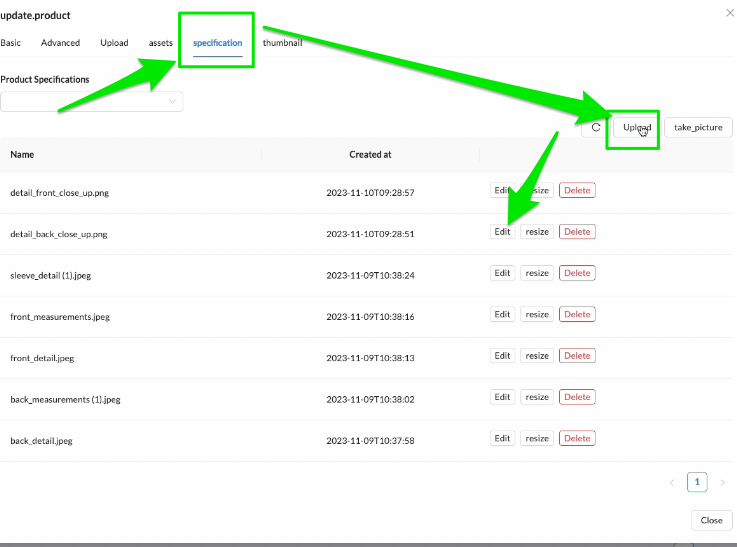
Draw lines on the images. Right-click on the line to manually set measurements and click "Save".
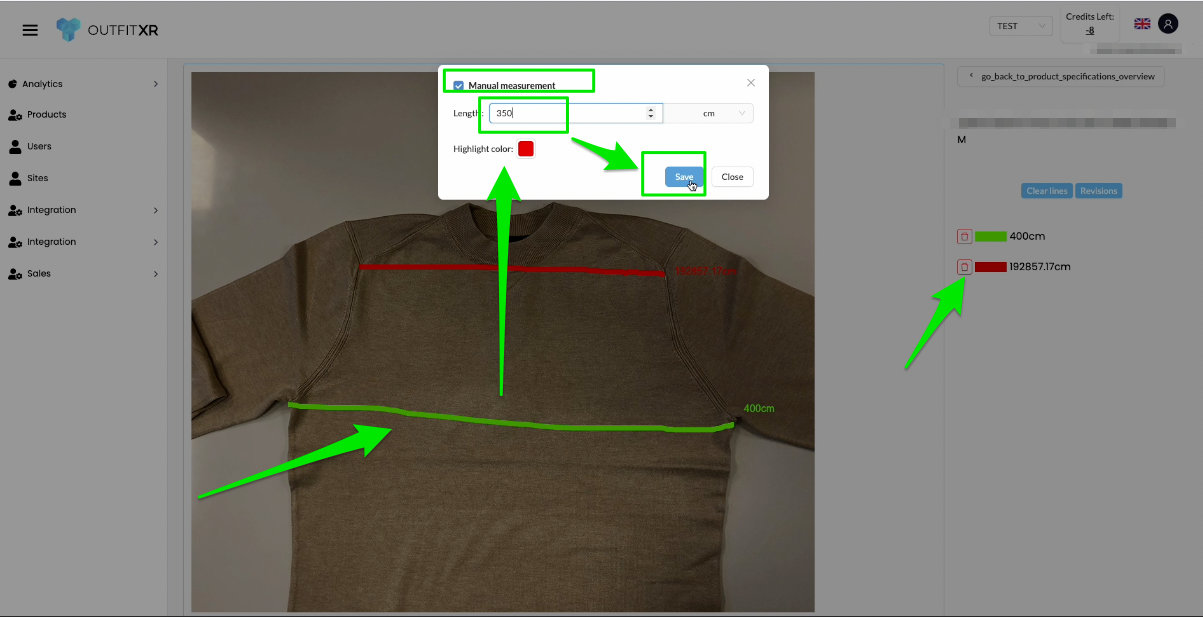
Repeat the process for other measurements. If unsatisfied, delete lines by right-clicking and selecting "Delete".
Accurately documented sizes guarantee a smooth creation process in Marvelous Designer.
Creating a Sweater Garment in Marvelous Designer
Go to File then New, and save your project in a desired folder.
Choose a default avatar or import your own avatar if you have one.
Make sure that you have an overview of both 3D window and 2D Pattern Window.
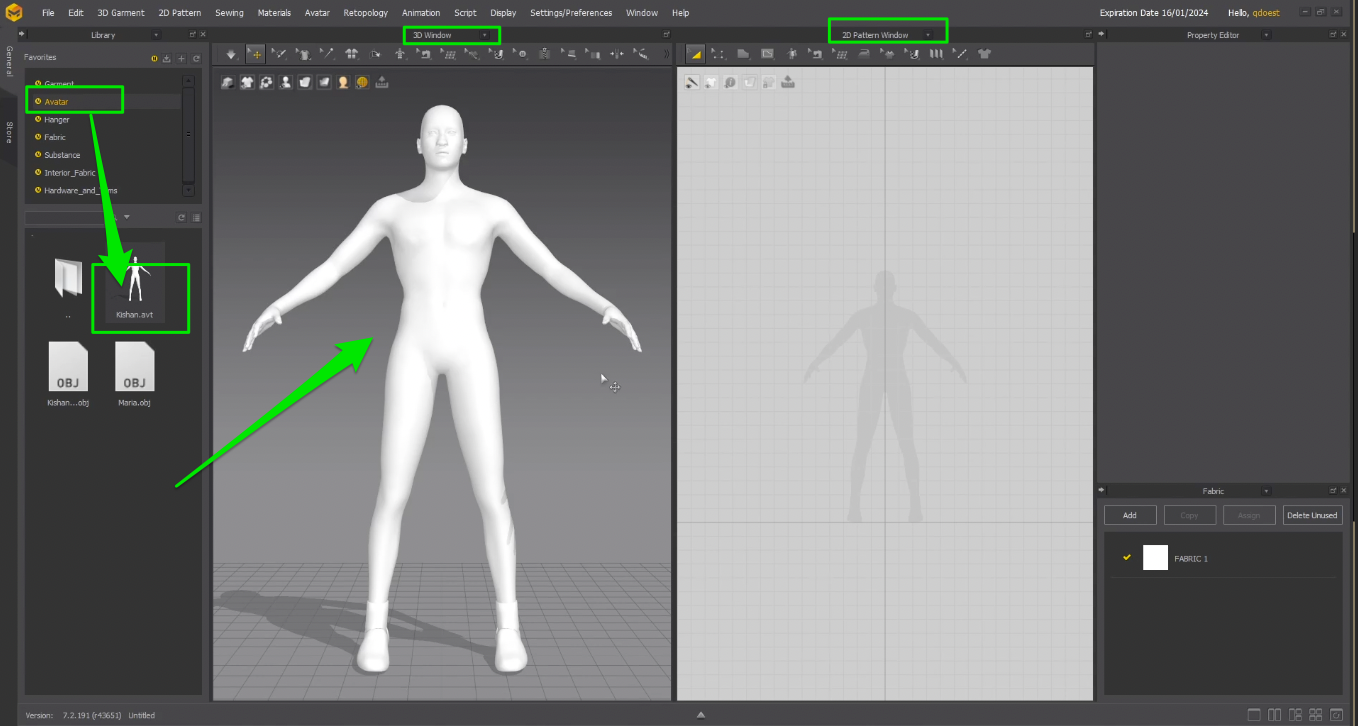
The avatar is now displayed on the left side in the 3D view, accompanied by a 2D silhouette on the right. Use the mouse scroll wheel for navigation in both areas, press it to move and rotate. To zoom in, simply scroll the wheel, and for 3D space rotation, utilise the right mouse button.
Create the Sweater Pattern
In the 2D pattern view, select the "Polygon" tool. Draw the sweater's front, back, and sleeves pattern pieces by clicking and dragging on the avatar.
If you're having difficulty understanding a clothing pattern, try Googling examples like 'sweater pattern' to get a better idea of what you need to draw.
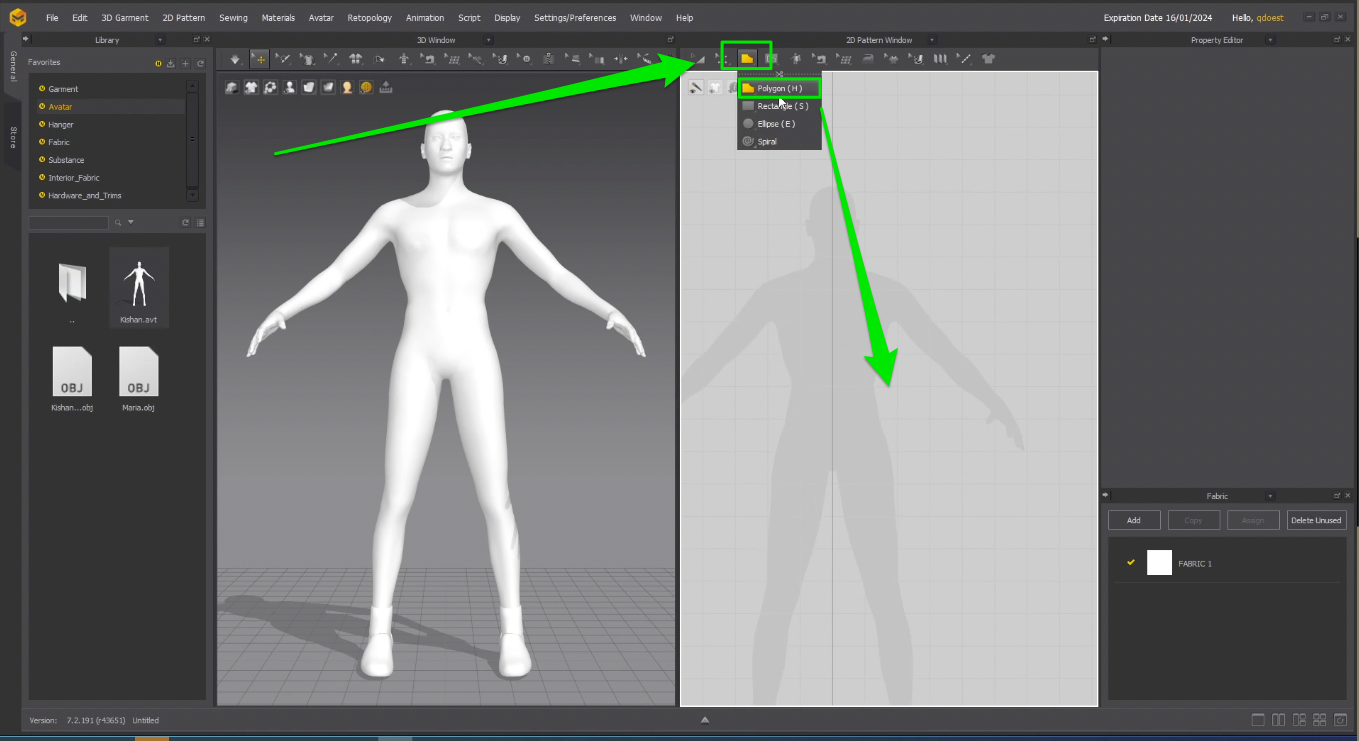
Begin with drawing half of the front pattern. And then select the pattern and copy, right click paste with command Symmetric Pattern.
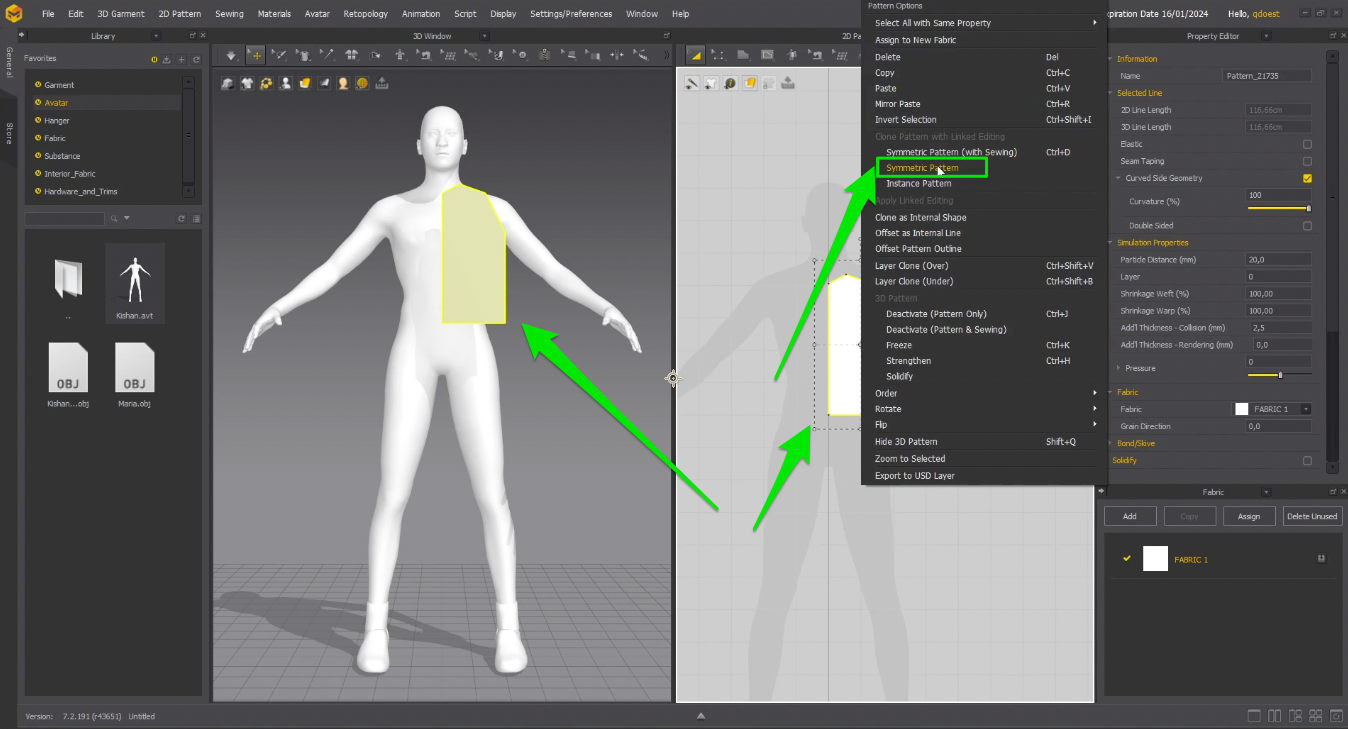
Then select the middle line and right click merge.

Draw the front, back, and sleeves of your sweater according to the provided measurements.
Press Shift+Z for a quick overview of the size lines in your design.
Adjust the pattern points and lines by clicking the Z key, or go to the Edit Pattern in 2D View.
Select the line, right-click, and choose ‘Change Length’.
In the pop-up window, modify the length of the line. Remember to adjust the direction as needed; you can change from the start, both, or end.
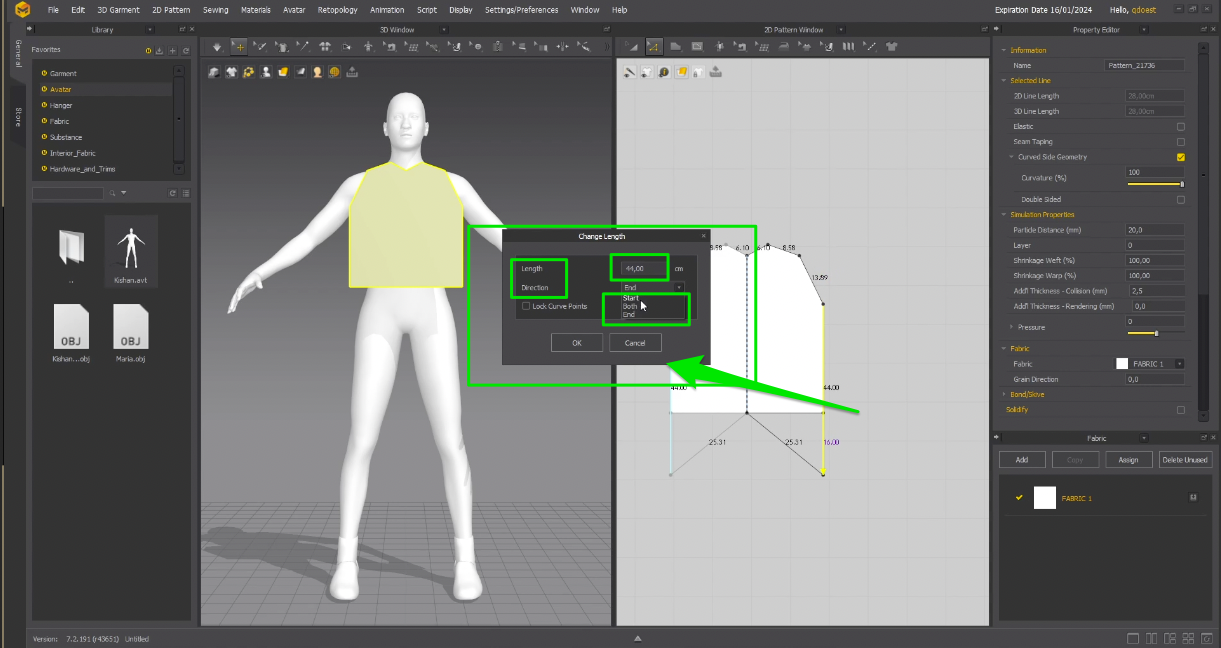
Adjust and move points following your garment pattern.
Continue to refine and improve the shape, paying attention to sizes and the garment pattern.
Sometimes, you need to go back to certain dimensions because changing one line can affect others.
Navigate to the top panel of the 2D Pattern window and select 'Internal Polygon Line'.
Begin drawing the internal lines where adjustments are needed for the front Sweater pattern.
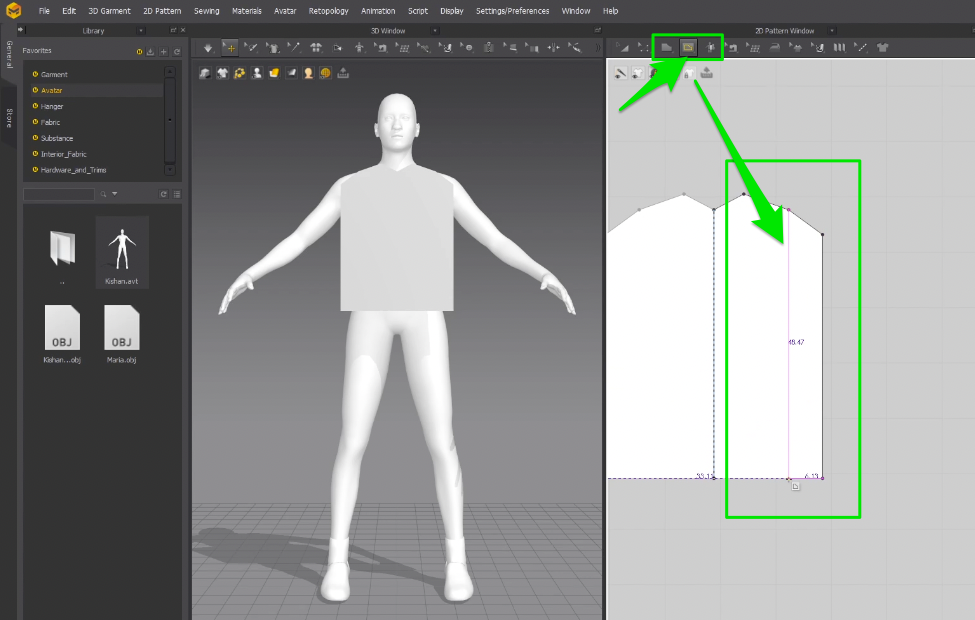
Use also Ctrl+Z, to go back if it’s needed. Save periodically your project.
Refine curve lines for neckline and sleeve openings easily using the 'Edit Curvature' tool or by pressing the 'C' key for quick adjustments.
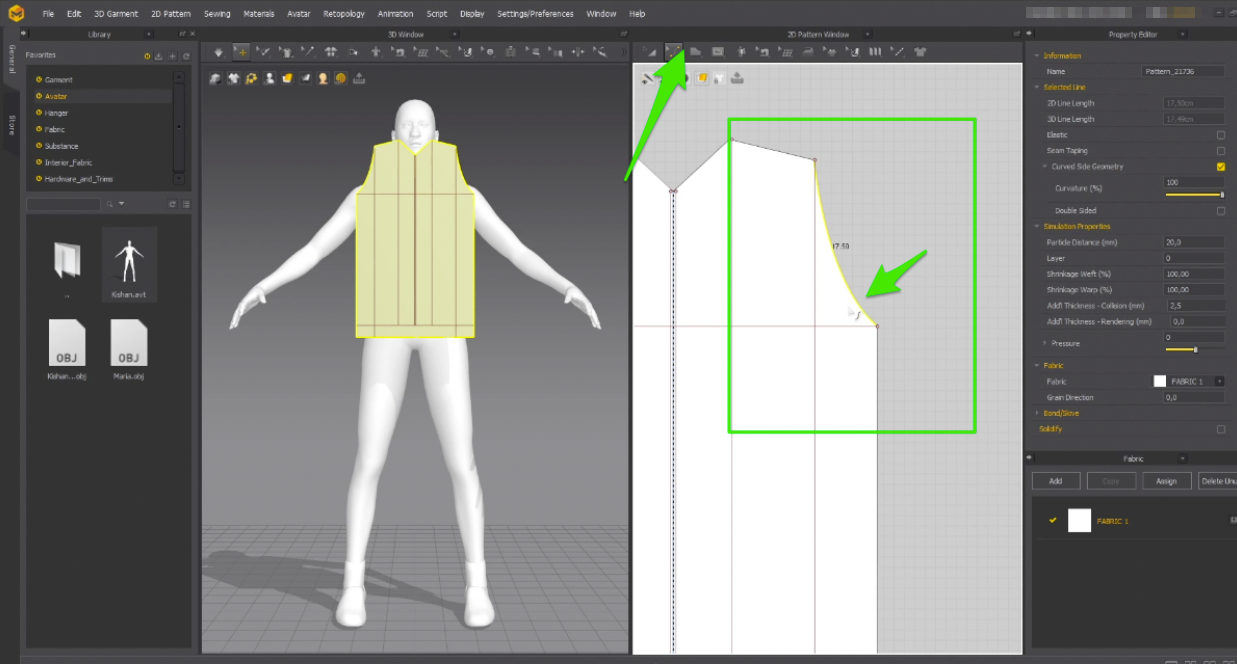
Add points later by pressing the 'X' key. For precise positioning, right-click to set the point's exact location. Repeat these steps for all the lines, adjust line dimensions by clicking on the line and then using the right mouse button to access 'Change Length’.
Remember to save your project periodically.
Continue refining and enhancing the shape, paying close attention to the sizes and the garment pattern. Occasionally, revisit specific dimensions, as altering one line may impact others.
Select the entire front shape by pressing the 'A' key, copy, and then paste it next to it. This will be the back Pattern.
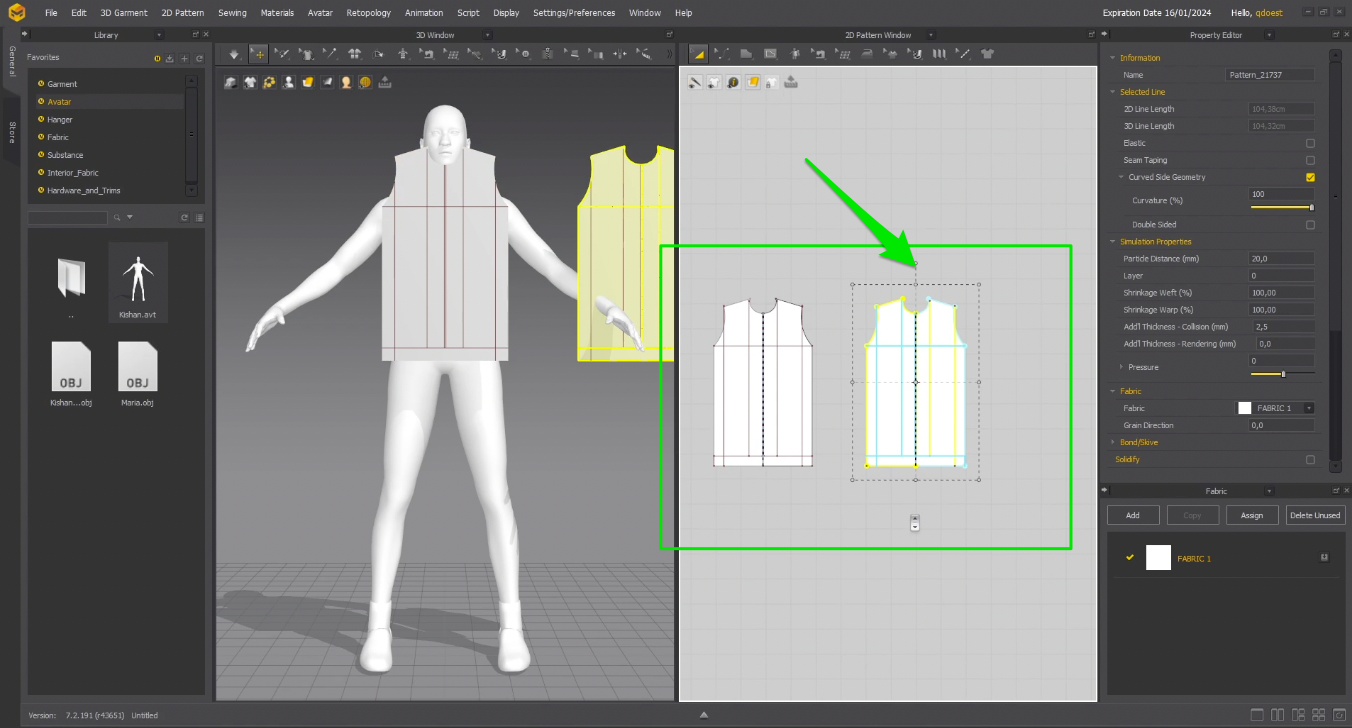
Adjust and edit the back pattern according to your measurements.
Repeat the steps for the front shape. Adjust line dimensions by clicking on the line and then use the right mouse button to access ‘Change Length’. For lengths inside the garment, draw inlines using the Internal Polygon Line or press the G key.
Refine curve lines for neckline and sleeve openings easily using the 'Edit Curvature' tool or by pressing the 'C' key for quick adjustments.
Back and front shapes are done, now it's time for the sleeve. Go to the ‘Polygon' or ‘Rectangle’ tool, and draw a shape. Adjust the shape by using the ‘Edit Pattern’ tool. Move points, make curves by using C key shortcut and X key for adding points.
To create the second sleeve, you can copy the shape by pressing A to select the desired shape and then the CTRl+C and Ctrl+V.
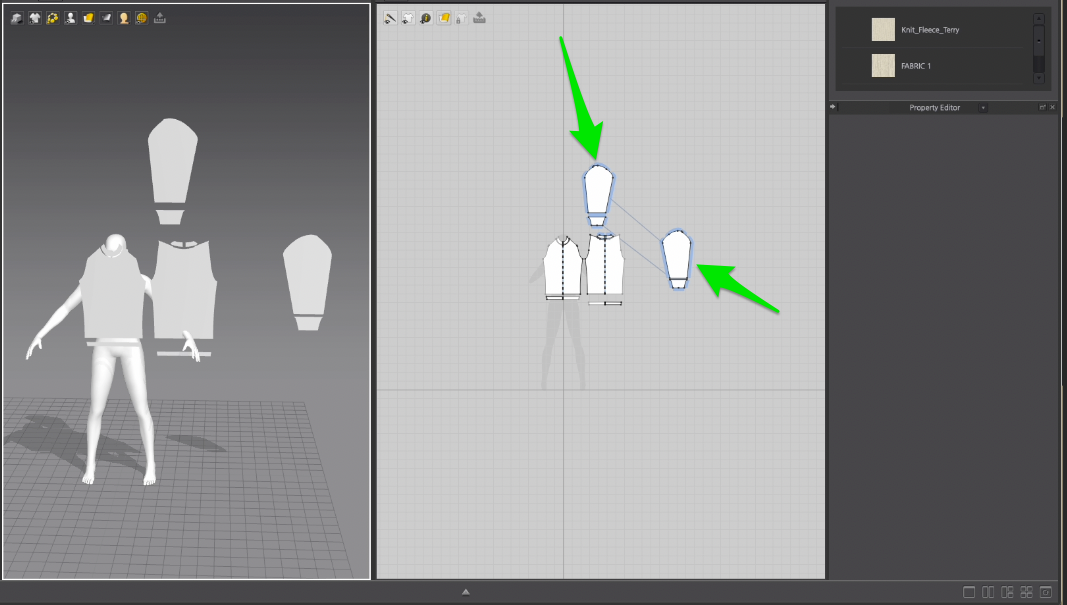
Create the collar and sleeve cuffs of the sweater in the same manner.
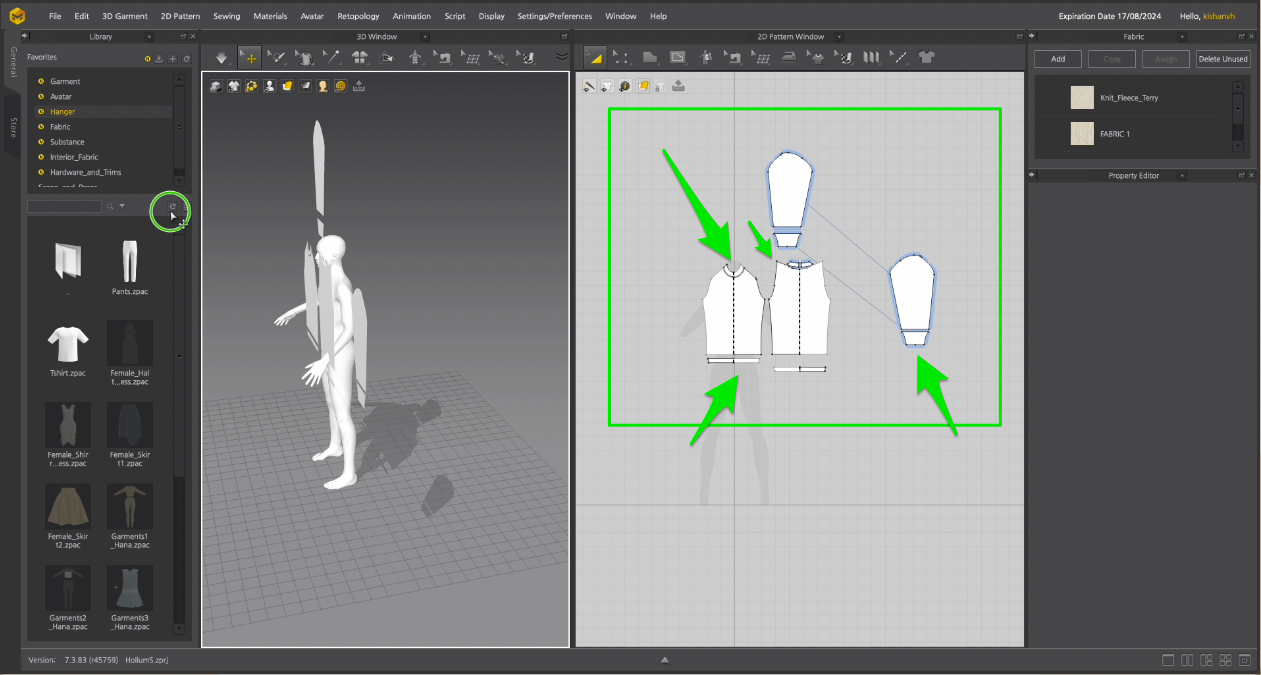
All patterns are now created. We need to create the seams to join them into a complete garment.
First, we will arrange them correctly around the Avatar to ensure an accurate simulation.
Navigate to the 'Show Arrangement Points' option in the top panel menu of the 3D Window.
You will observe a various points on the avatar.
Try selecting each shape individually and then arrange it around the avatar.
Choose a shape, hover over the corresponding points on the avatar, and then click to position it.
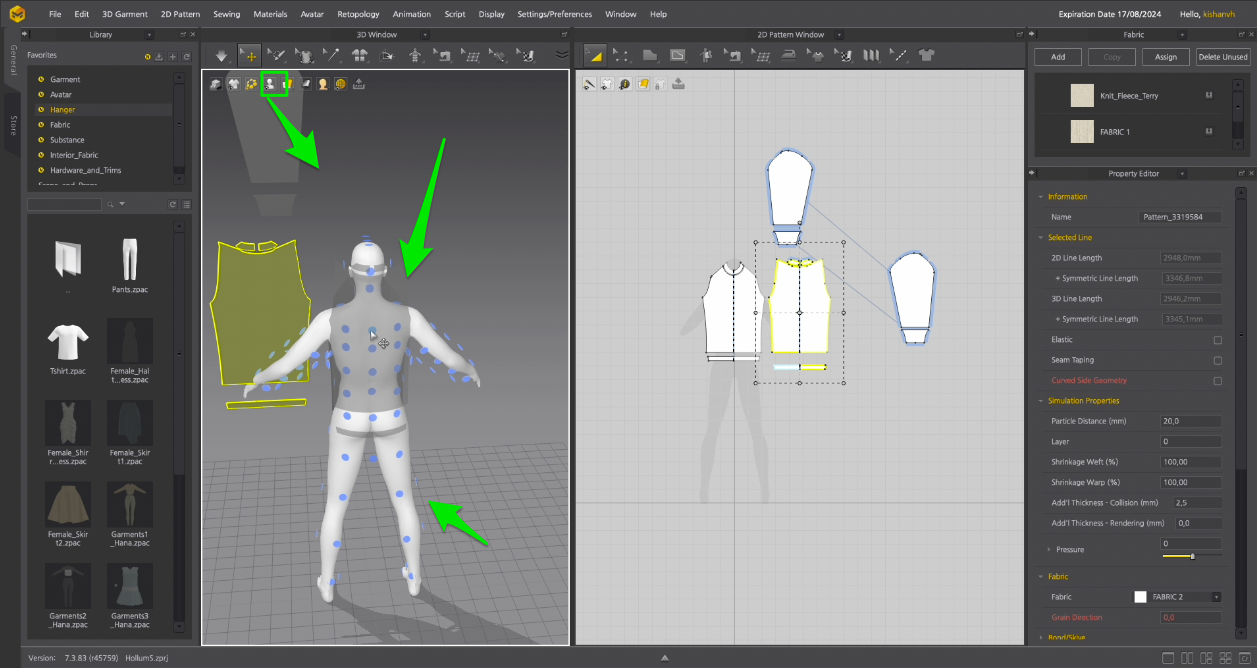
Add Seams
When you are confident that your garment is complete, it's time for the seaming process.
Now navigate to the Edit Sewing and choose from the menu Segment sewing.
Select the Segments that you want to sew, where the sweater would have seams (e.g., shoulders, sides, sleeves with back and front garment).
Ensure that the seam lines are straight but not in an X shape.
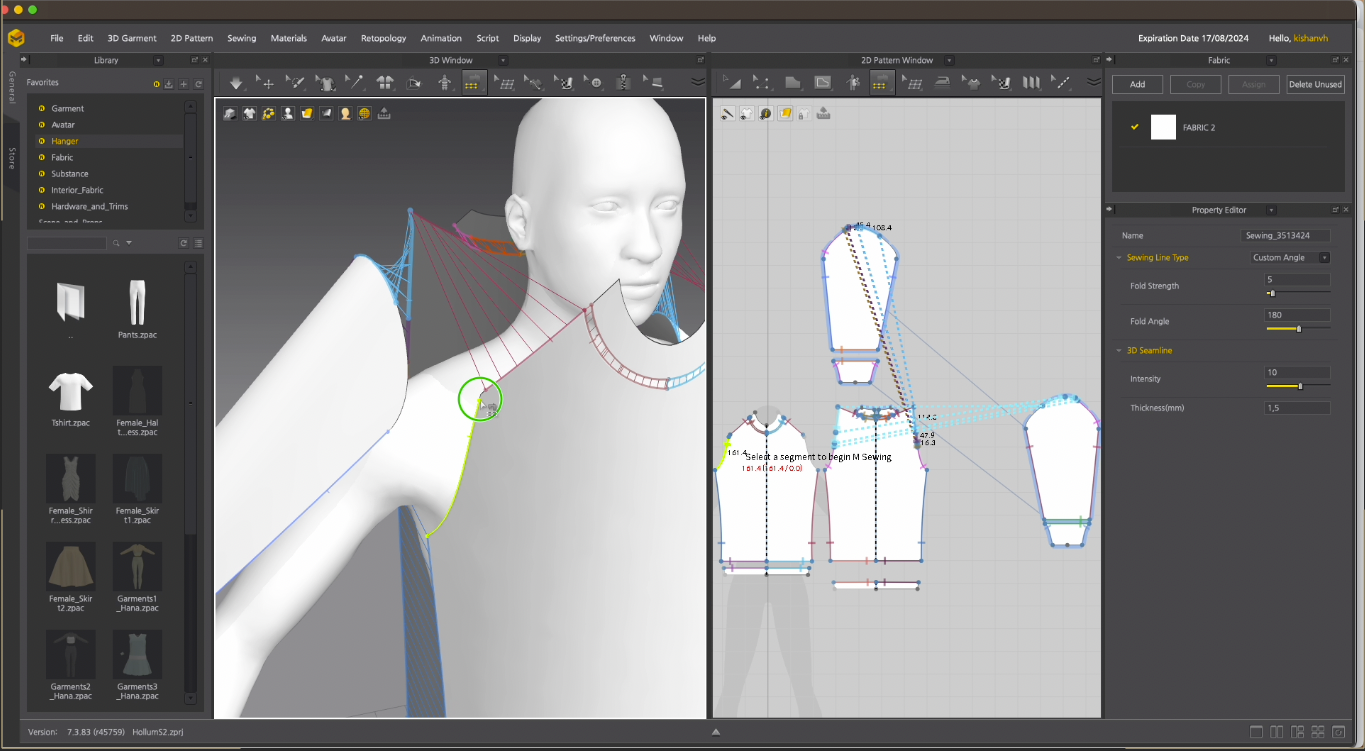
After completing the sewing process, it's time to simulate the fitting of the garment on the avatar by clicking the Spacebar.
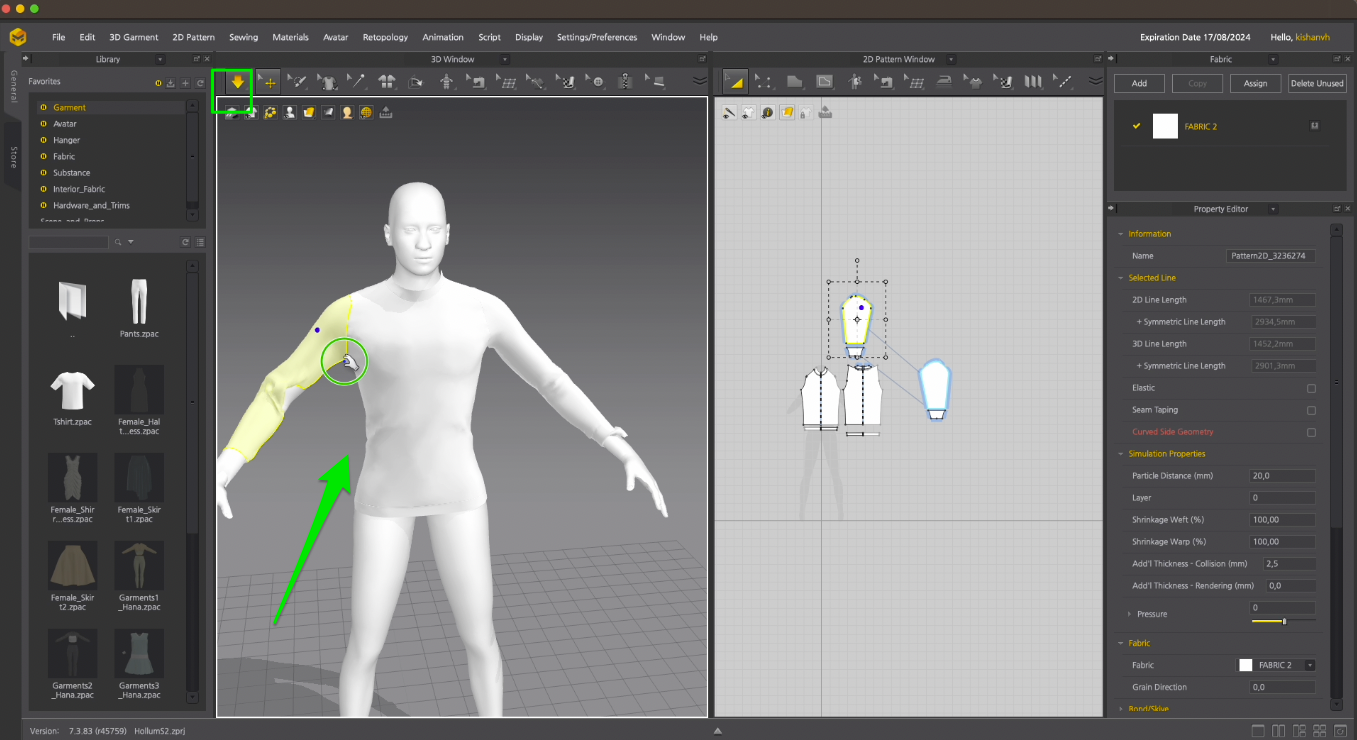
While the simulation may not be flawless in certain areas, you can refine it by manipulating specific points in the 3D window view to achieve a more accurate fit.
Texture
Apply textures and materials to the sweater by navigating to the fabric overview in the left panel.
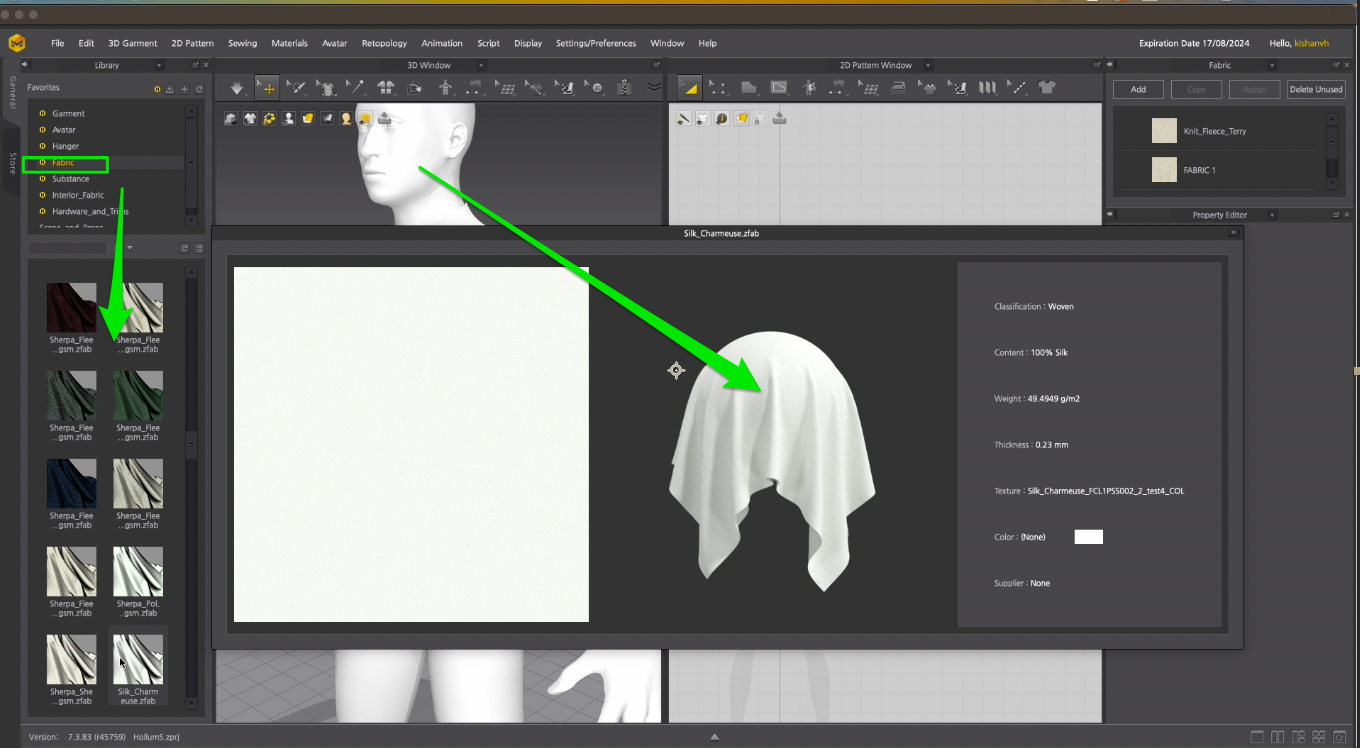
Choose your desired texture from the available options, an drag to the garment into 2D Window or 3D Window. Also you can adjust the color and texture parameters in the right panel.
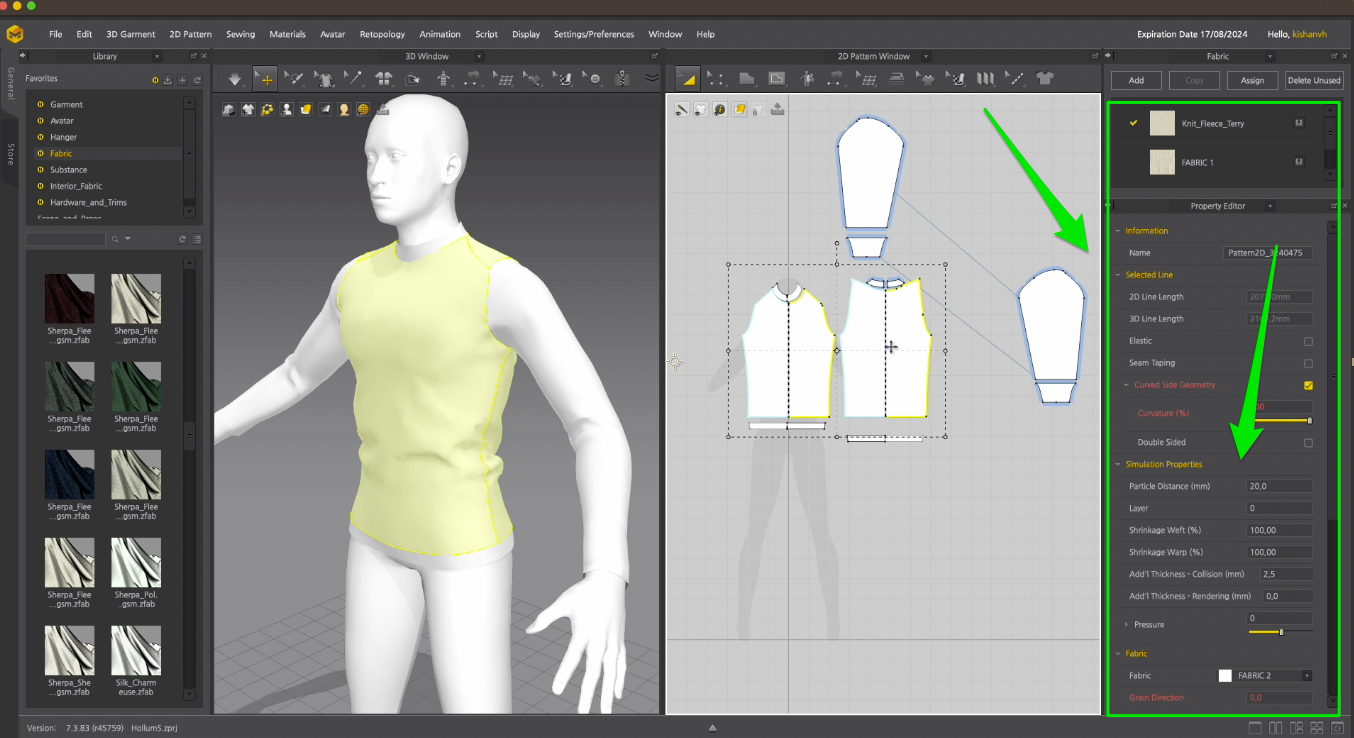
Adjust color and textures until you're satisfied with the look.

Exporting Sweater Garment
Once satisfied with the design, go to the Export section.
Change the 2D View Window to UV Editor.
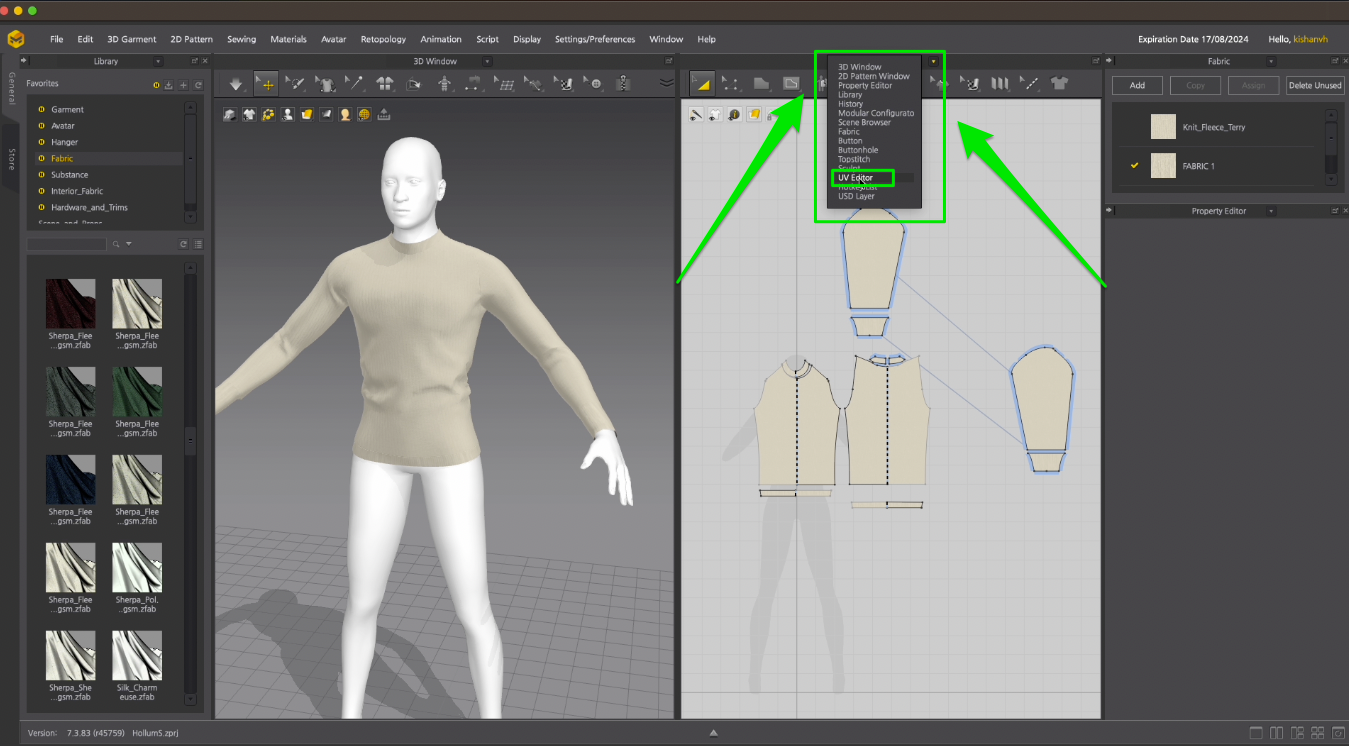
Select all patterns, right-click and choose “Fit UV to 0-1” and then click OK.
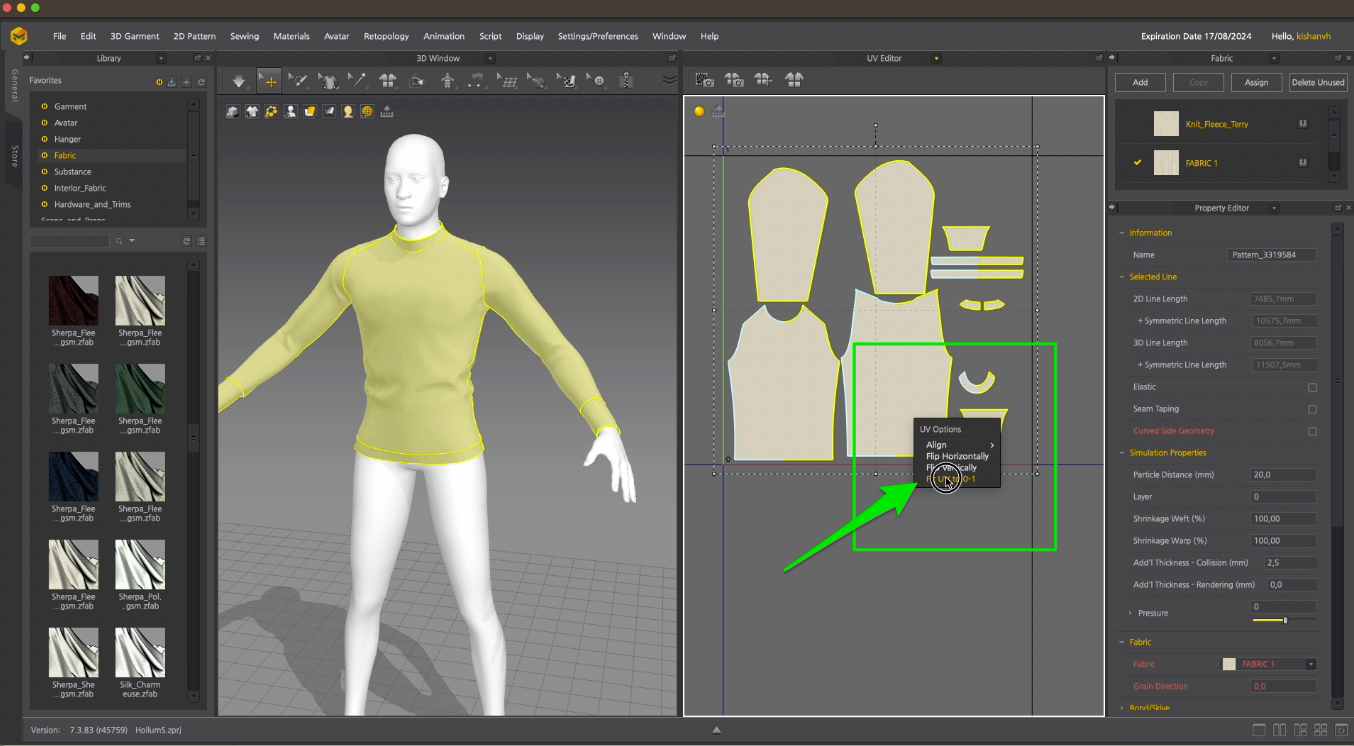
Make sure that all the UVs fit in one tile, if not repeat the procedure.
Ensure that each pattern is clearly visible and does not overlap with another pattern.
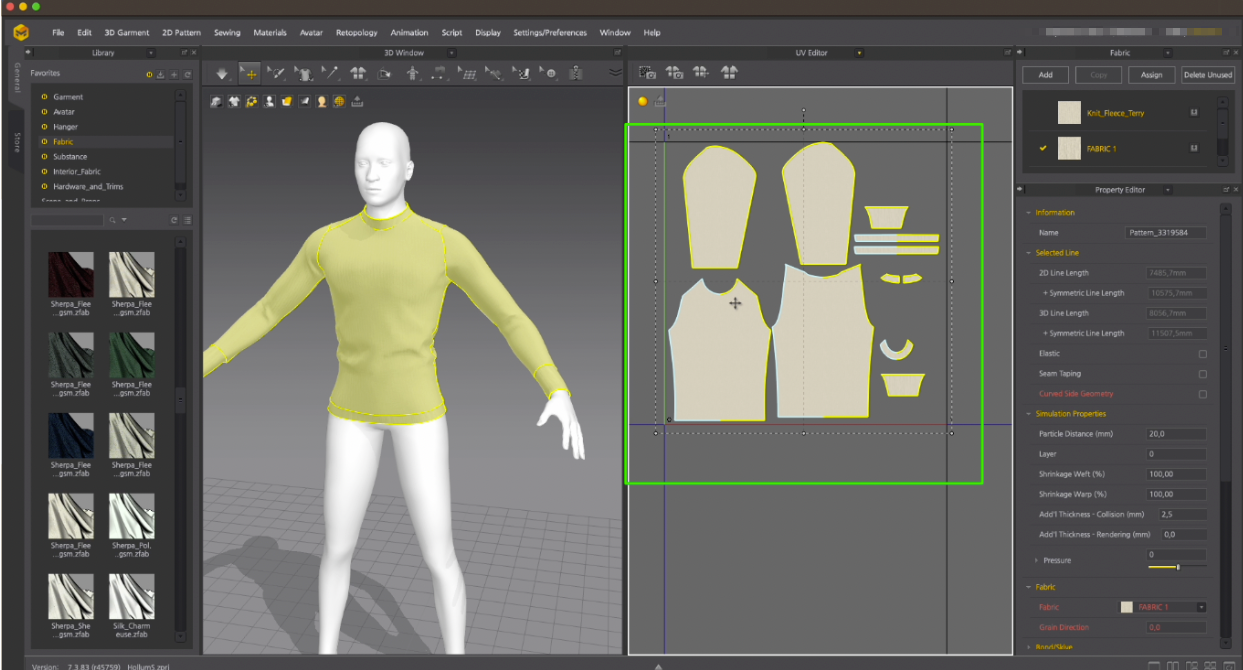
Click File->Export->OBJ. Choose a good path. Make an apart folder.
Name the file something recognisable, in this case “Sweater_Garment”. Make sure to use the "Garment” word in the file name. Export with the following settings:
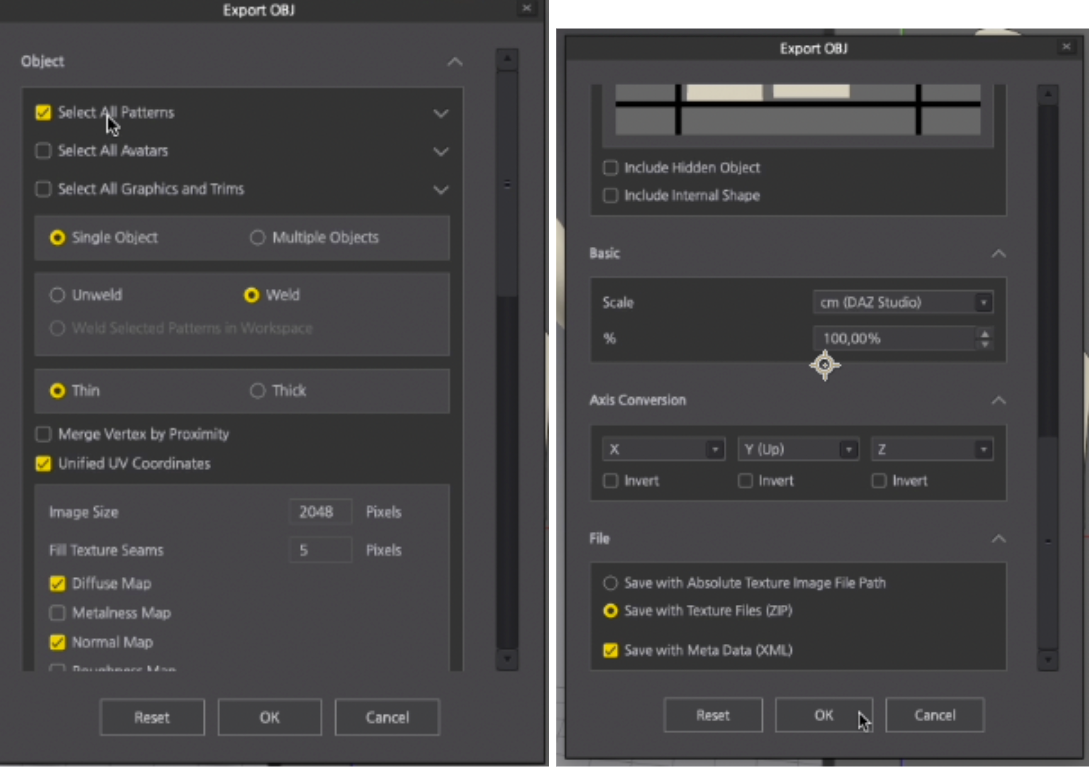
Exporting the Patterns OBJ file. In the UV Editor deselect all, right click and select 'Reset UV to 2D Arrangement'.
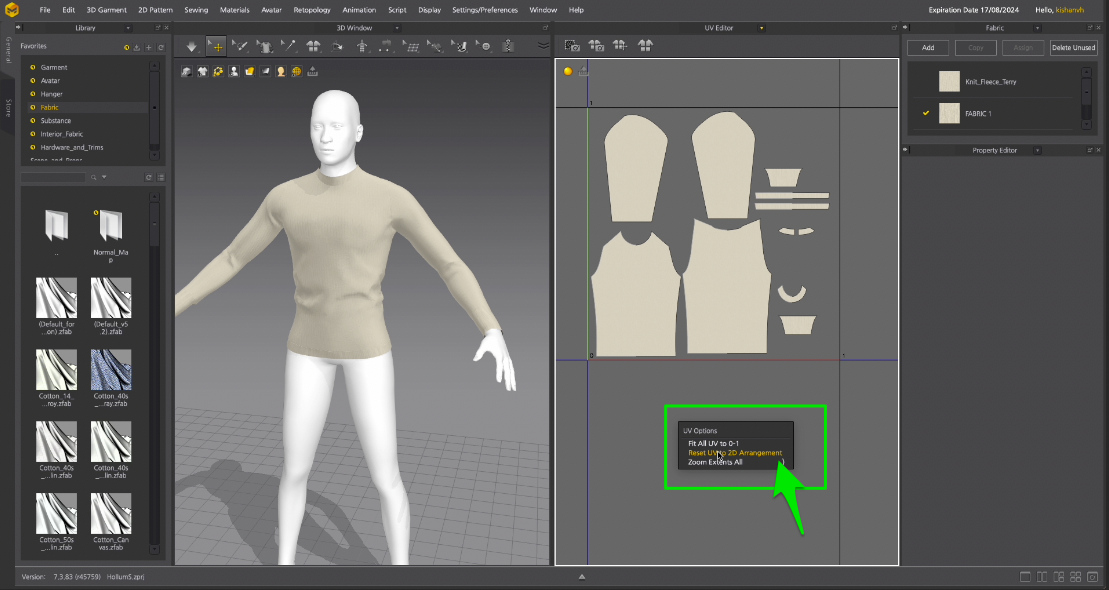
Click File->Export->OBJ. Name the file something recognisable, for instance ‘Sweater_Pattern'. Make sure that the name contains the word 'Pattern'. Export with the following settings (don't forget to deselect all texture maps):
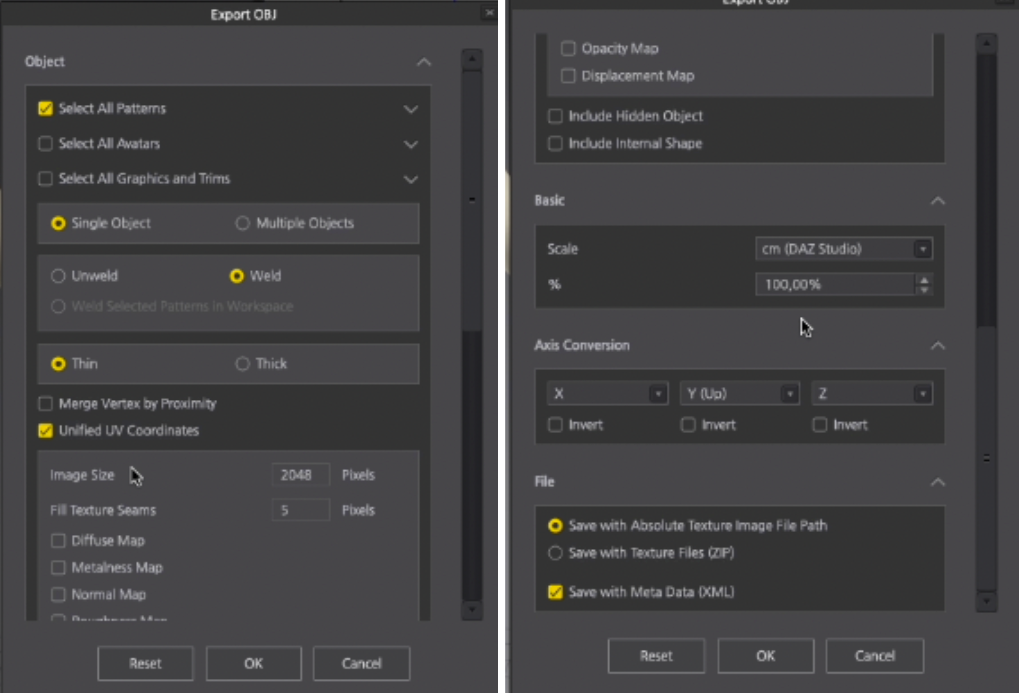
Navigate to your Files Directory and locate these files. Unzip the Garment folder and then make another zip with all files. And name your Folder for instance “export”.
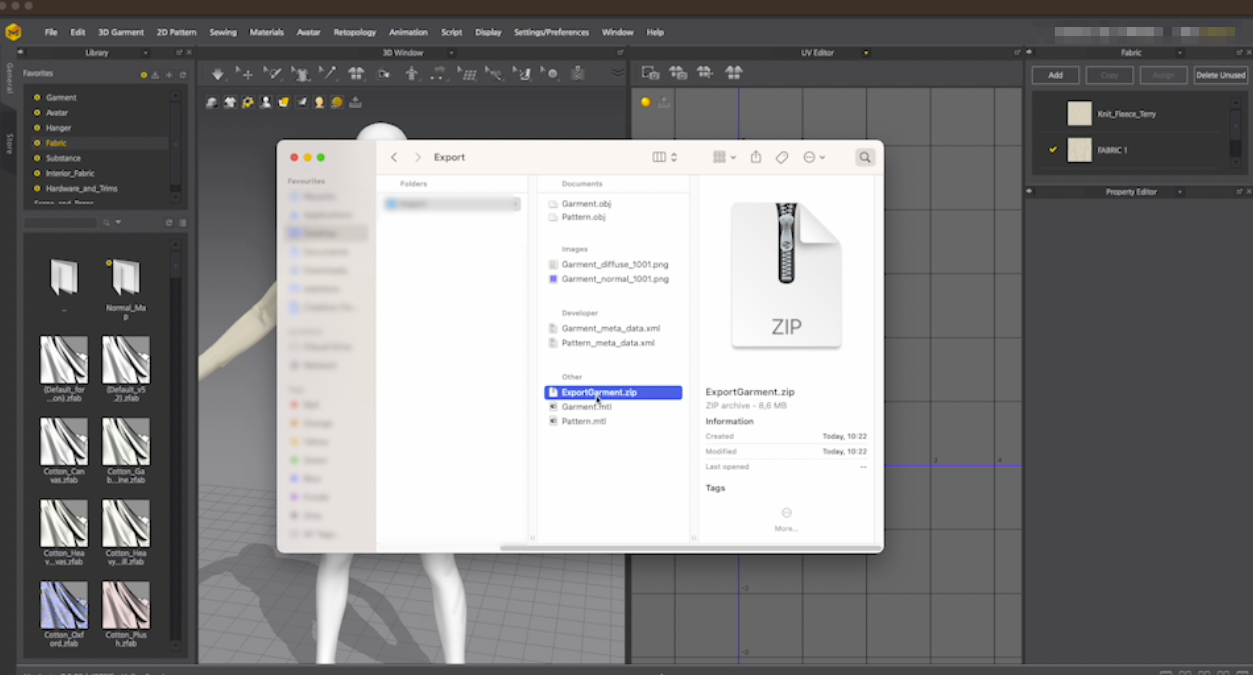
How to test your garment in Shopify fitting Room
Let's set up a Fitting Room on Shopify. Navigate to the Shopify Partners login page, and log in. Once logged in, you'll be directed to the Homepage.
Access the Apps section and click on 'Apps' in the left-hand menu. Select 'OutfitXR - Virtual Try On' from the list of apps.
Navigate to the settings and verify if you are connected. Click on the ‘Connect’ or ‘Reconnect’ button.
Introduce your account details and click log in.

Now, you're directed to your own store. Continue by choosing 'Products' from the displayed list of the app. You will be directed to a page with a list of products.
Select a product from the list that is not yet synced, and click on the 'Edit' button.
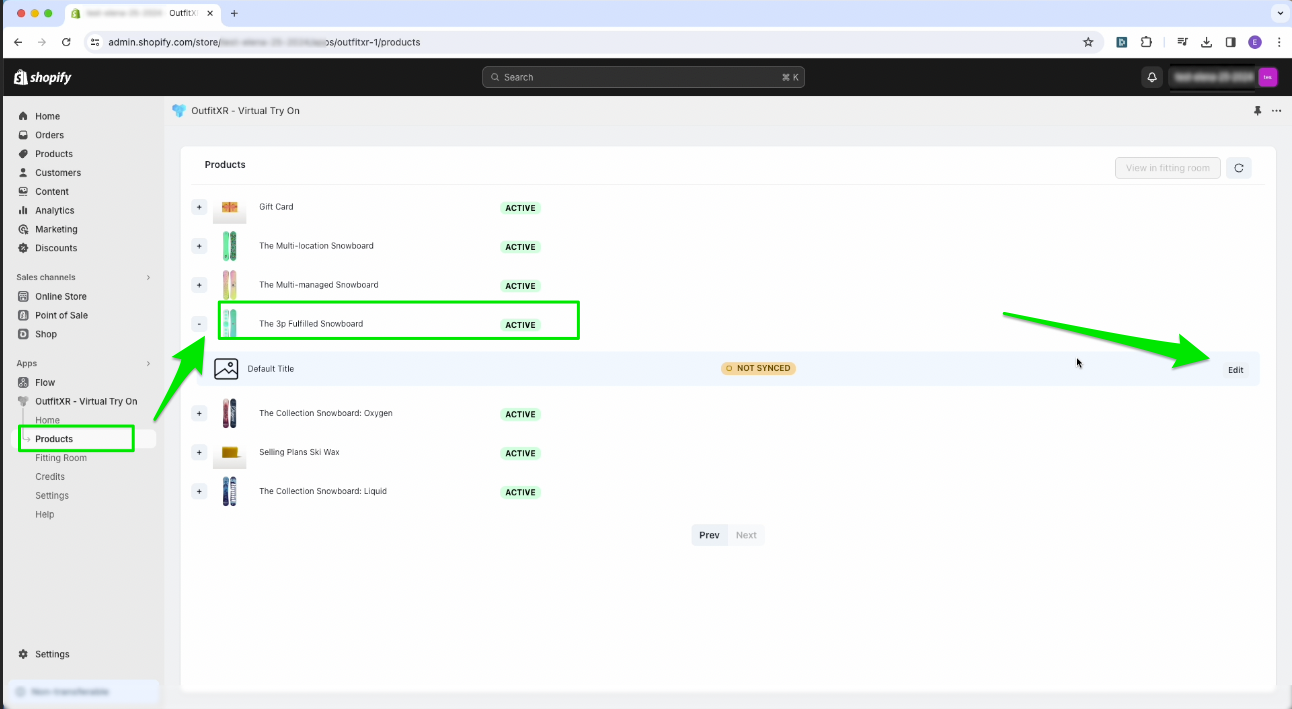
Within the pop-up window, navigate to the Properties section and make your selection for the preferred gender.
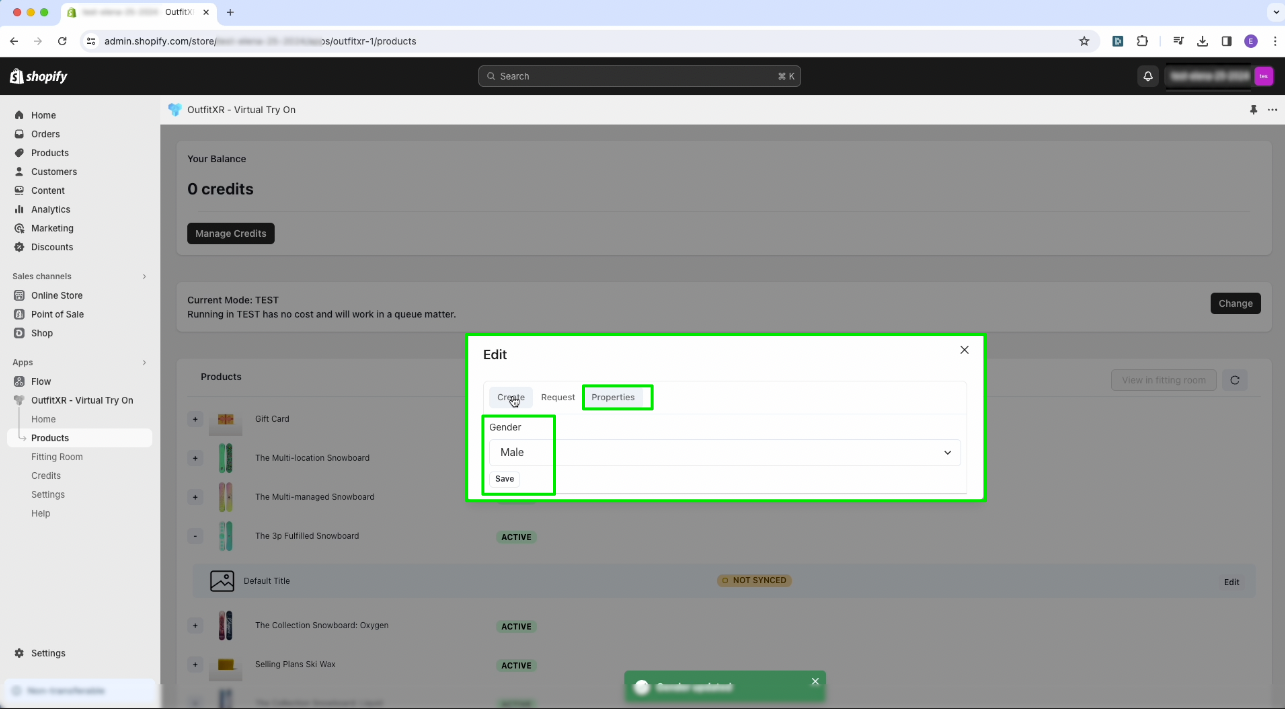
Return to the Create section, locate the zip file on your computer and drag it into the field labeled ‘Upload’ to upload it. Click on 'Refresh' to check the upload status. You can click 'Refresh' a few times; make sure the status now shows 'Available.' Once confirmed, you can close the window.
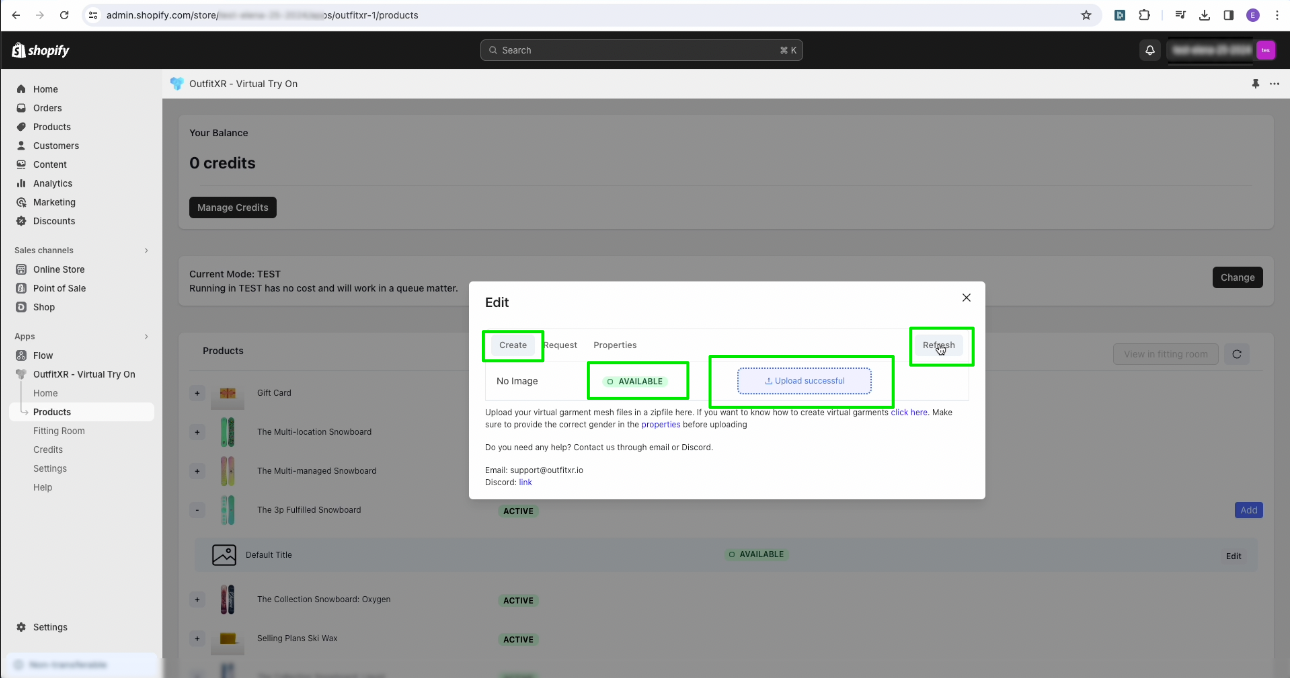
Now, to create a fitting room, access the 'Products' page from the top-left menu.
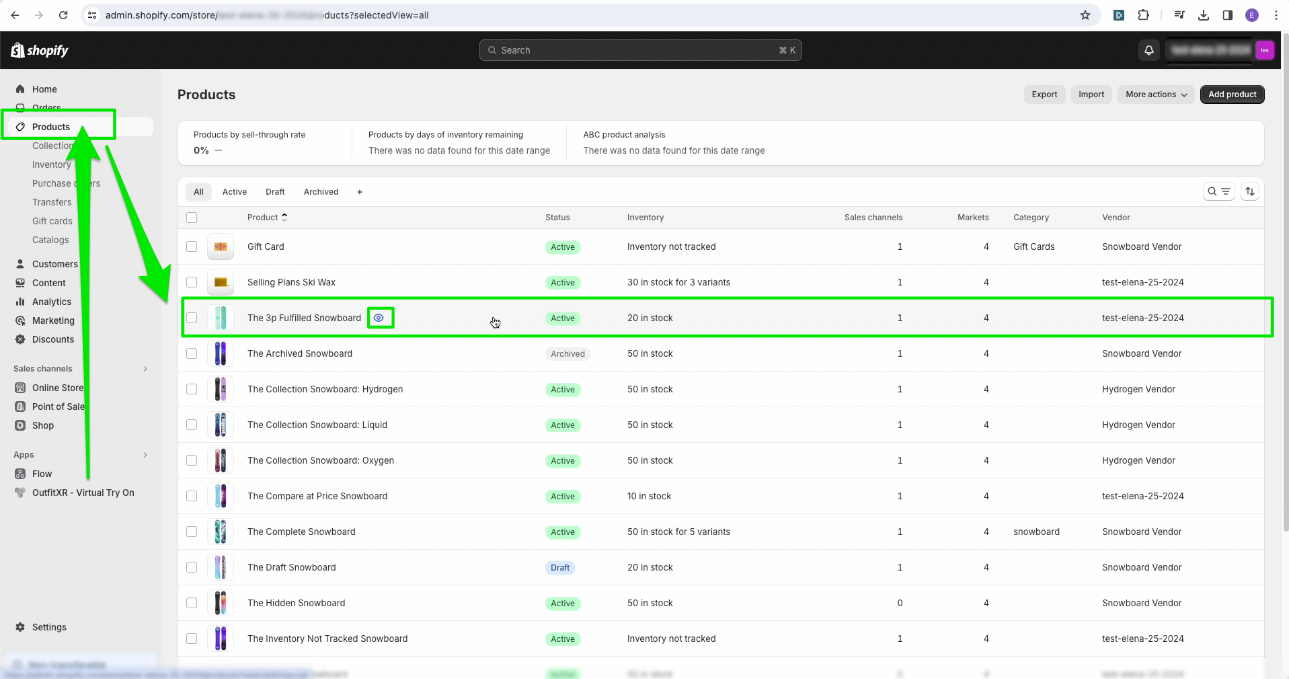
Search for the recently edited product in the displayed list and click on the eye icon to access it.
After the product has opened, you will see a ‘View in Fitting Room' button on the right side of its page.
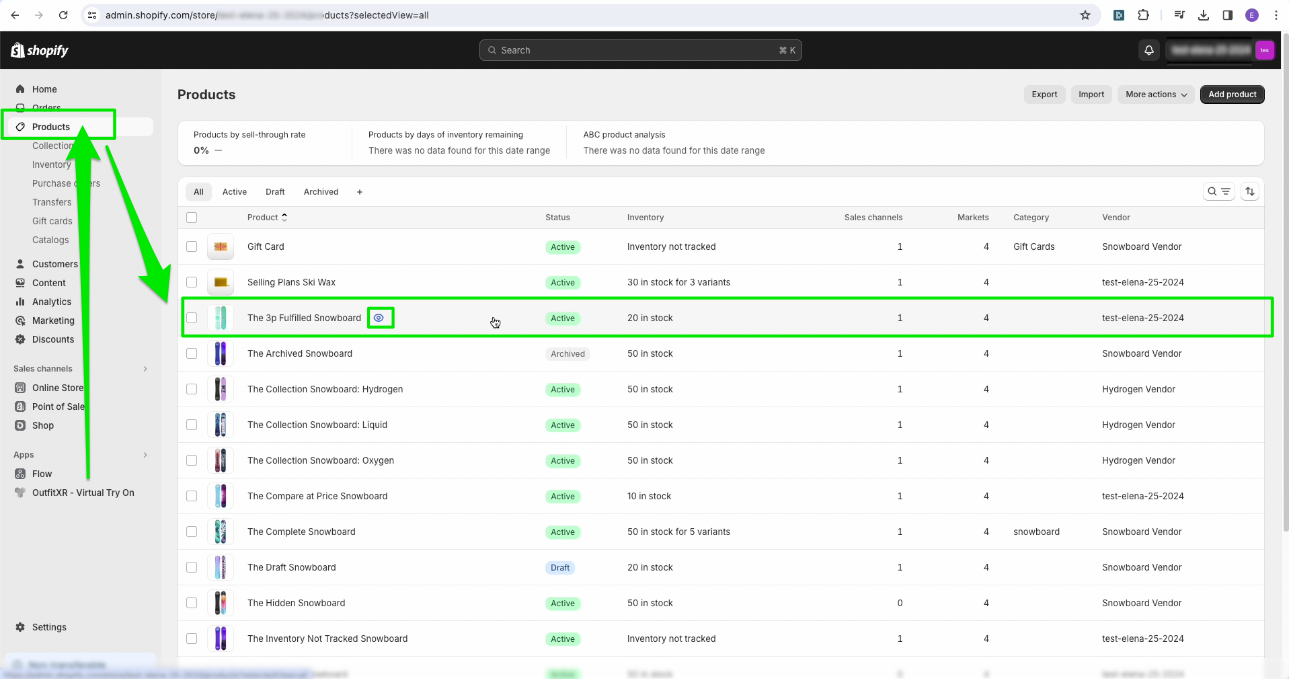
Click on it. And then Click on 'Book a new’. Now, select an avatar and click the 'Create Fitting Room' button.
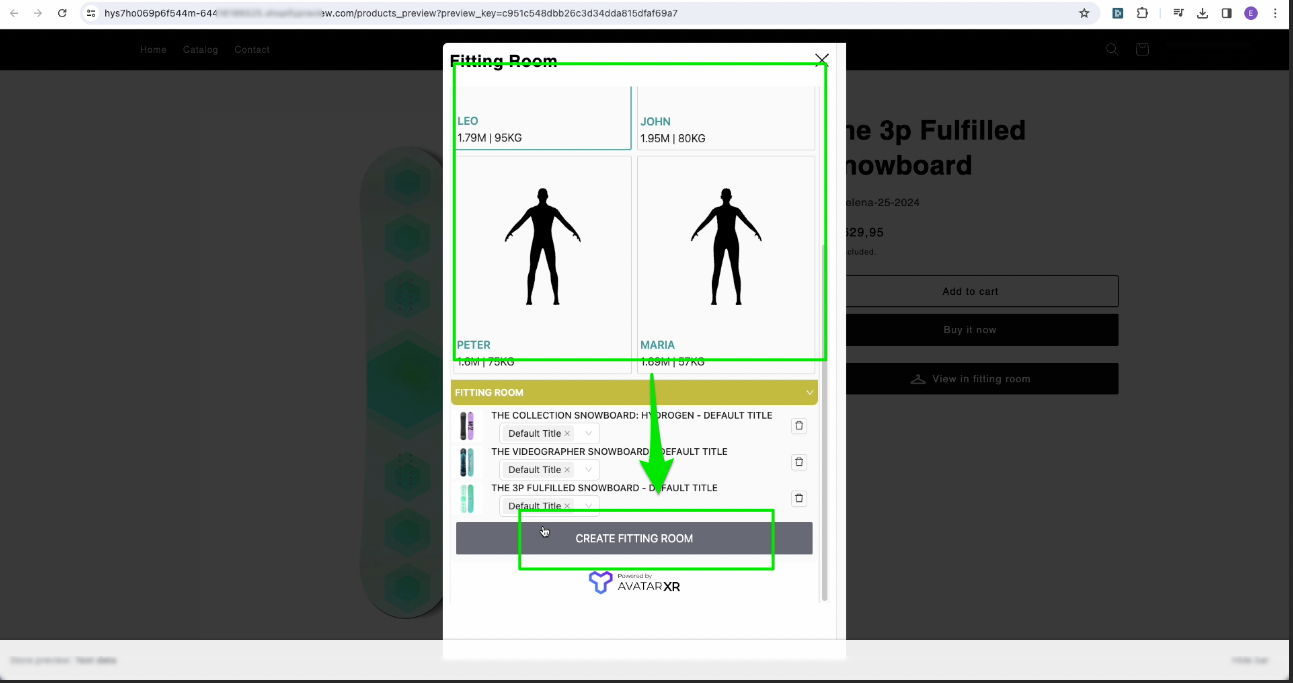
You will be automatically redirected to the Fitting Room. Wait until your personal fitting room loads to test the garment.
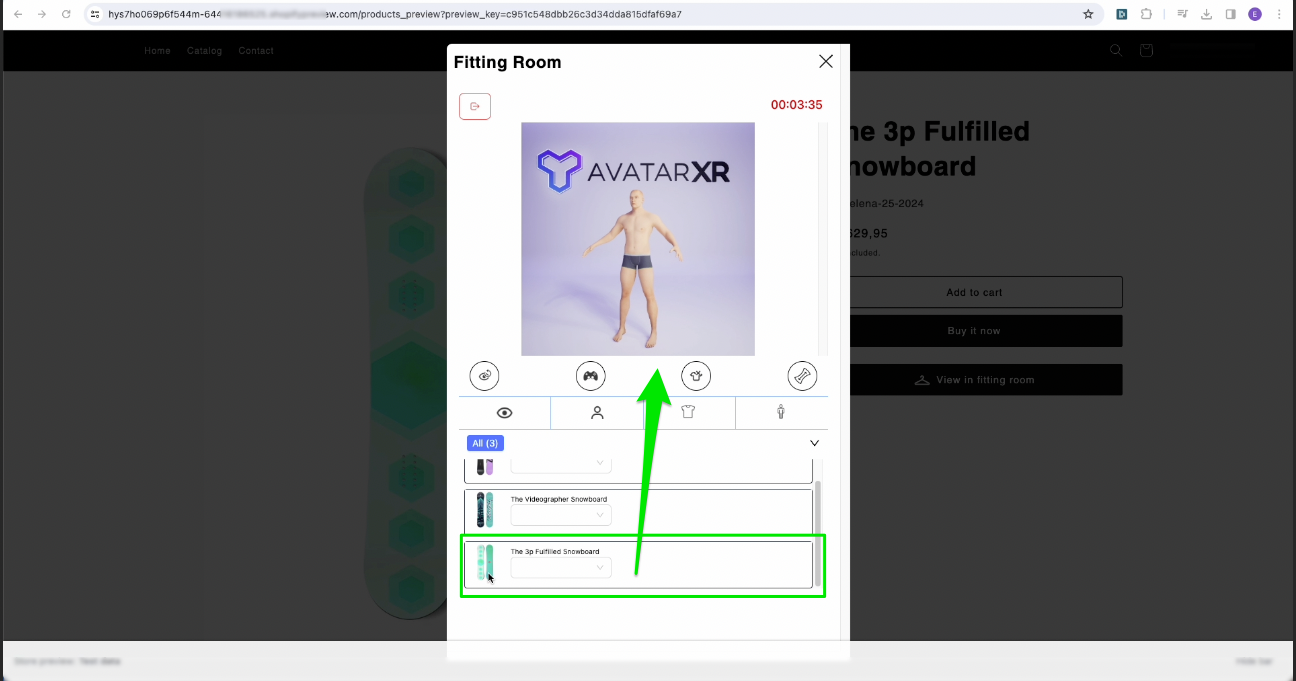
Once the fitting room is displayed, you have the option to select an avatar and then proceed to try on clothing garments on that chosen avatar. In the displayed fitting room you can see the simulation of the garment on the avatar.

In the Fitting Room, you can implement various functionalities, such as zooming in or out. Additionally, you have the option to reset the view to return to the initial overview.
Use the 'Heat Map' option to visualise how garments of different sizes fit on the avatar. This allows you to observe whether the garments are either too loose or too tight on your selected avatar.

You can manage other controls, including adjusting the height, rotating the view, and zooming for a more personalised experience.
Congratulations on completing the tutorial! You've now gained the skills to design a digital garment and seamlessly test it in a fitting room. Well done!
